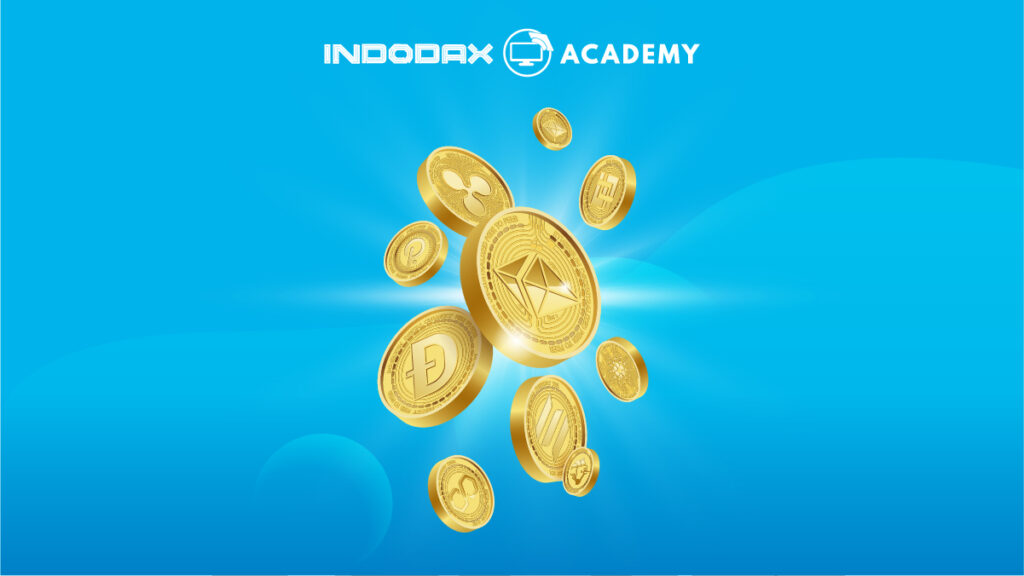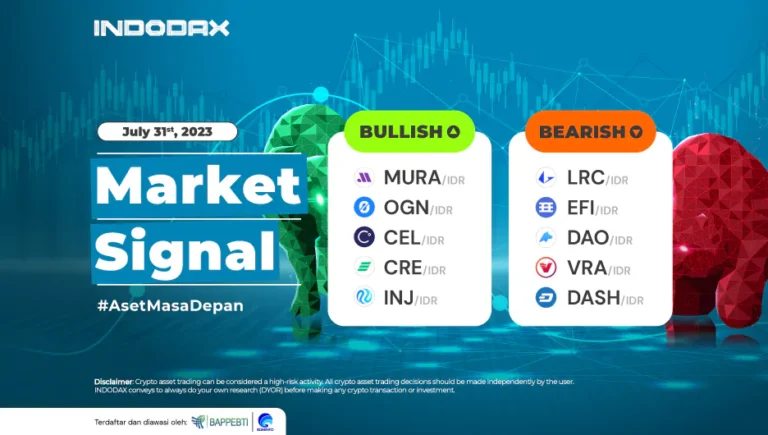Crypto staking or coin staking is one of the easiest ways / as an alternative to generating passive income aka passive (additional) income.
Staking itself is defined as an act of locking crypto assets into the blockchain network without the need to trade them.
The mechanism or staking system is actually similar to saving money in a bank, with the aim of earning interest.
But, how does it work? To find out more about crypto staking, read the thorough explanation below.
Crypto Staking : What Is Coin Staking ?
As mentioned above, the coin staking or crypto staking is an act of locking crypto assets to obtain rewards. The mechanism used in this case is proof-of-stake consensus on the blockchain network.
For long-term investors, staking coins is a popular way to earn cash or passive (additional) income.
As briefly mentioned above, the mechanism is similar to saving in a bank. In this case, you will store crypto assets and those assets will usually be loaned to other users. From that transaction, you will get a share of the interest charged to the other user.
In short, you will lock crypto assets to participate in running the blockchain and ensure its security. This method can be done on blockchains that use a proof-of-stake consensus mechanism, including Solana, Cardano, and Cosmos.
How Does Coin Staking Work ?
How coin staking or crypto staking works can be understood by learning that a blockchain with a proof-of-work mechanism requires energy to add new blocks to the blockchain, while proof-of-stake will generate (validate) new blocks through this staking process.
The assets stored will be locked into the blockchain using a consensus proof-of-stake algorithm for a certain period of time. Later, the amount of profit that will be obtained depends on the price and number of crypto assets locked and the duration of locking the asset.
In general, the party staking crypto on the PoS blockchain will be referred to as a validator. Later, validators get rewarded when they validate transactions. In this case, each PoS has its own rules for validators.
Related to this, there are those who determine the validation rules according to the asset locking period or determine a certain minimum limit. Referring to the rules and algorithms of validators, PoS works to perform actual validation and distribute rewards to validators.
Usually, the reward/interest is calculated according to the amount of assets locked. For example, in a PoS blockchain that uses a minimum limit rule, nodes will deposit the required amount of crypto assets into the network, then locked.
If later the node succeeds in creating a new block, the validator will receive a reward. The greater the number of crypto assets that are locked and the longer the locking period, the greater the profit.
In order for this blockchain to work efficiently, validators must provide stable services. As for the effort to maintain PoS stability is by cutting interest on crypto assets owned by validators who act fraudulently. Later, the interest deduction is carried out directly by the blockchain.
What Are the Benefits of Coin Staking?
Coin staking can be a very good choice for those of you who want to earn passive income through crypto assets, especially for those of you who don’t have time to constantly monitor price movements.
Since staking is done by locking assets, you will earn interest on the locked assets. However, before deciding to stake, make sure that you do your research beforehand and make sure that the platform you choose is a trusted platform.
If you use this method, you must lock the crypto assets you have for a certain period of time. That means, during that certain time, you can’t sell the coin.
Coin Staking Reward Calculation System—Crypto Staking
Regarding the reward calculation system for coin staking, each blockchain has its own way of calculating staking rewards. However, some use a block-by-block method.
Basically, here are a number of factors to consider when calculating crypto staking rewards:
- The number of coins locked by the validator.
- The time period the validator has actively locked the coin.
- The total amount of coins stored on the network.
- Inflation rate.
Meanwhile, for some other networks, the staking reward will be determined by a fixed percentage. Rewards will be distributed to validators and as coins increase, it will encourage users to spend their coins instead of keeping them.
The staking reward schedule can also be predicted because the determination of the validator can also be predicted based on probabilistic odds. For example, in the Cardano network, staking rewards will be earned at the end of each epoch—generally lasting for 5 days.
Guide to Coin Staking
Currently, for those of you who are interested in staking coins, you can do it on Tokenomy. Staking through this platform can be an easy way to develop crypto assets.
For information, Tokenomy is a licensed digital asset investment platform that offers a number of crypto-based financial services. At Tokenomy, you can safely invest crypto assets to earn passive income.
On this platform, there are also various choices of types of deposits according to your convenience, which are offered at competitive rates. Currently on Tokenomy, there are a number of coins that can be staked, including ETH, DOT, XTZ, TRX, and ADA. Here’s the guide:
- Select the coin you want to stake based on the list available on Tokenomy, for example TEN token.
- You can buy TEN (TEN/IDR) on the Indodax market, then send it to your Tokenomy wallet.
- If you have arrived at Tokenomy then please enter Tokenomy Earn. Next, click the “Staking” tab and select the TEN asset then enter the amount you want to stake.
- Congratulations! Coin staking on Tokenomy has been successful.
Thus a review of crypto staking that you need to understand. Check out other recent reviews about digital assets only at Indodax Academy.








